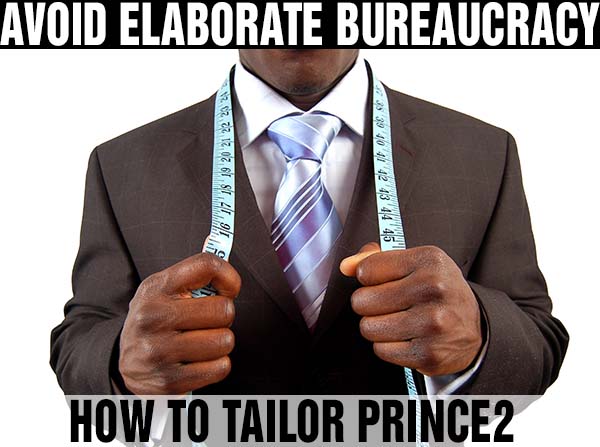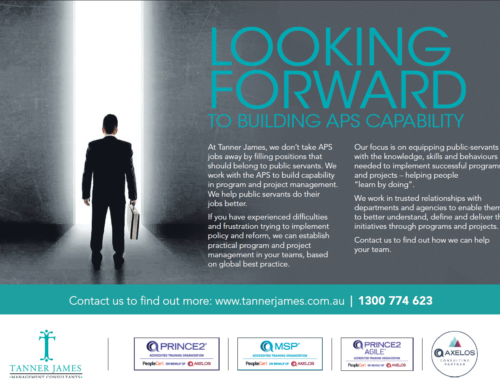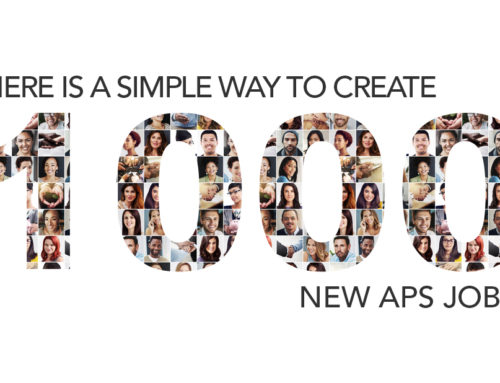Last month I wrote about one critical feature of the PRINCE2® 2017 update – tailoring, and specifically the fact that if you aren’t tailoring PRINCE2 you aren’t using PRINCE2.
My blog really seemed to resonate with people, and I received feedback that many of you working in Canberra departments and agencies feel they are entangled in an elaborate project management bureaucracy.
So this month I thought I’d try to help get you started, or perhaps re-started, with tailoring PRINCE2. Because PRINCE2 is flexible, can help you structure things, and can unleash your creativity – and yes, this is true for those of you using agile delivery approaches.
A recap on tailoring
Tailoring means adapting a method or process to suit the situation in which it will be used.
PRINCE2 is tailored to suit the project environment, size, complexity, importance, team capability and risk.
Tailoring can be applied to processes, themes, roles, management products and terminology.
The PRINCE2 2017 manual is explicit: if you are not tailoring, you are not using PRINCE2. So as of right now, the majority of Canberra departments and agencies are actually no longer using PRINCE2 – food for thought.
Two types of tailoring
The PRINCE2 2017 update makes it clear that PRINCE2 can be tailored to create an organisation’s project management framework, and that framework should be tailored to suit each individual project.
The framework itself should provide guidance on what tailoring is or isn’t permissible by projects. In my experience this is where the vast majority of departments and agencies go wrong – they don’t provide for project tailoring at all, let alone providing guidance for how to go about tailoring. Thus projects find themselves being required to rigidly adhere to the project management framework, and unsurprisingly this lack of flexibility results in many feeling they are entangled in an elaborate bureaucracy.
Where to begin
It seems obvious where to begin – sit down and create or update the departmental project management framework, and include some guidance on tailoring, correct? No. While starting with the framework is a very common approach, in my view it is the wrong place to begin. Doing so tends to create theoretical models, enshrined in templates, and so an elaborate bureaucracy is born.
Instead, the correct place to start is with individual projects. Pick some pilots with different characteristics (complexity, importance, team capability, risk, agile projects, simple projects, projects in a programme, projects involving commercial suppliers etc), and give tailoring a go.
What do I mean “give it a go”? It is actually very simple: before you embark upon any of the activities that form part of the PRINCE2 processes, talk about how an activity or set of activities will be undertaken. The key word here is talk. Discuss how this is actually going to happen – when, where, how long will it take, with what degree of formality, who will be involved. This will naturally lead to consideration of how the various elements of PRINCE2 need to be tailored to suit the project.
When you have tried tailoring on a few projects, and have some experience and lessons under your belt, then you can start to encapsulate common themes (pun intended) into your project management framework.
Tailoring takes skill and experience to make the correct judgements, but everyone must start somewhere. The only place I really don’t think you should start is by building a framework, creating or completing more templates. As I have said many times before, proper use of PRINCE2 is about thinking, engaging and communicating, it is not about paperwork!
Want to know more about tailoring PRINCE2 2017?
If you would like to hear about the update and tailoring personally, please call me personally on 0407 404 688 or email me at john.howarth@tannerjames.com.au . I would be very happy to come to meet you, answer questions and provide further information.
What do you think?
Please feel free to comment on the blog itself or via Linked In.






Leave A Comment